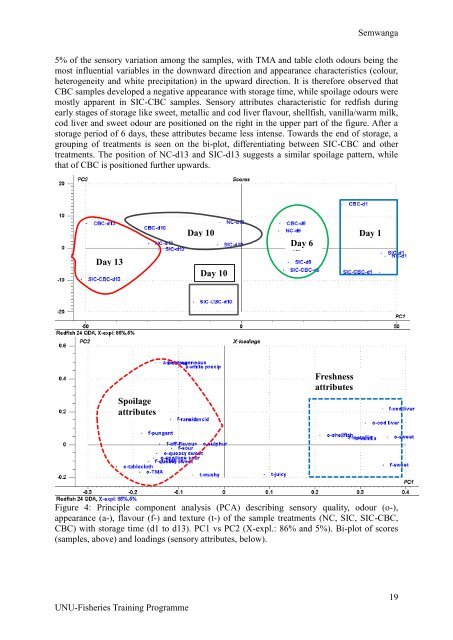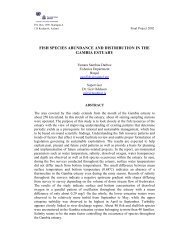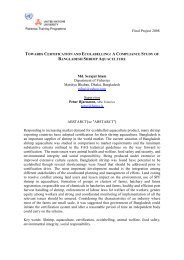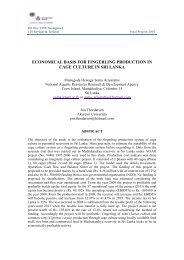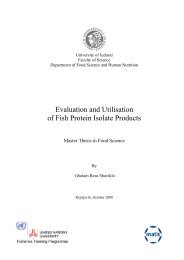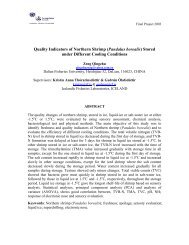THE EFFECT OF DIFFERENT COOLING TECHNIQUES ON THE ...
THE EFFECT OF DIFFERENT COOLING TECHNIQUES ON THE ...
THE EFFECT OF DIFFERENT COOLING TECHNIQUES ON THE ...
Create successful ePaper yourself
Turn your PDF publications into a flip-book with our unique Google optimized e-Paper software.
Semwanga5% of the sensory variation among the samples, with TMA and table cloth odours being themost influential variables in the downward direction and appearance characteristics (colour,heterogeneity and white precipitation) in the upward direction. It is therefore observed thatCBC samples developed a negative appearance with storage time, while spoilage odours weremostly apparent in SIC-CBC samples. Sensory attributes characteristic for redfish duringearly stages of storage like sweet, metallic and cod liver flavour, shellfish, vanilla/warm milk,cod liver and sweet odour are positioned on the right in the upper part of the figure. After astorage period of 6 days, these attributes became less intense. Towards the end of storage, agrouping of treatments is seen on the bi-plot, differentiating between SIC-CBC and othertreatments. The position of NC-d13 and SIC-d13 suggests a similar spoilage pattern, whilethat of CBC is positioned further upwards.Day 13D Day 10 1010100010Day 10Day 66Day666666Day 1DDdday10FreshnessattributesSpoilageattributesFigure 4: Principle component analysis (PCA) describing sensory quality, odour (o-),appearance (a-), flavour (f-) and texture (t-) of the sample treatments (NC, SIC, SIC-CBC,CBC) with storage time (d1 to d13). PC1 vs PC2 (X-expl.: 86% and 5%). Bi-plot of scores(samples, above) and loadings (sensory attributes, below).UNU-Fisheries Training Programme19


